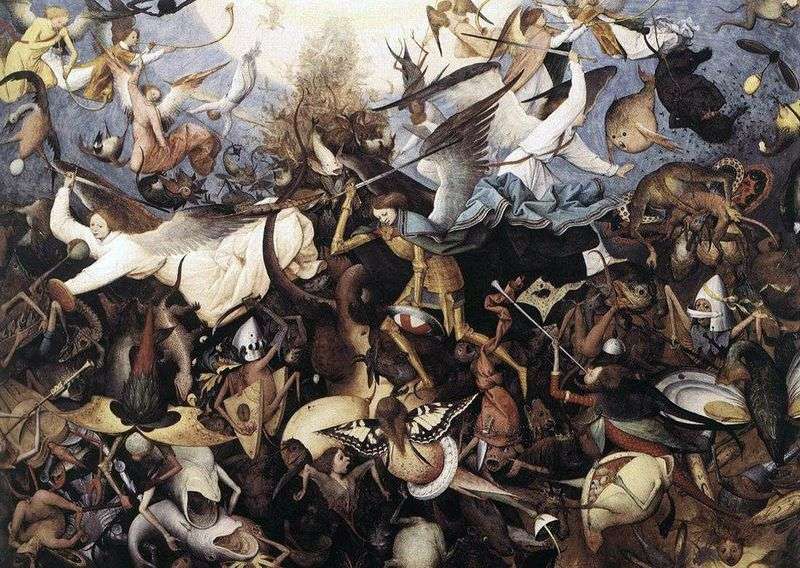
Painting “The Fall of the Rebellious Angels”. From 1561 until the end of his life, Bruegel lives in Brussels. Most of the paintings of this period were written by the order of collectors, his patrons – the actual ruler of the Netherlands, Cardinal Antonio Pernodo da Granvela, Antwerp collector Nicholas Jongelink, the Dutch humanist scholar Abraham Ortelius.
Bruegel marries Meiken Cook, the daughter of his first teacher, becomes the father of two children, receives from the City Council an honorary order to perpetuate the grand opening of the channel between Brussels and Antwerp. There are about 25 works by Bruegel of this period, but this is only part of what he did. After moving to Brussels, the artist creates phantasmagoric paintings “The Triumph of Death”, “Mad Greta” and “The Fall of the Rebellious Angels”.
Peter Bruegel, as if looking at the world through the prism of Bosch, creates an eerie “panegyric” of Death. The impression of an ominous fantasy is further strengthened by the fact that Bruegel introduced Death in the form of innumerable hordes of skeleton warriors. The painting “The Fall of the Rebellious Angels” is based on a well-known biblical story, and is also replete with sinister Bosch characters. It seems to Bruegel that humanity is mired in the realm of nonsense and cruelty, leading to general death.
Gradually, the tragic and expressive worldview of the artist is replaced by bitter philosophical reflection, the mood of sadness and disappointment. But after a while Bruegel again turns to real forms, again creates pictures with distant, boundless landscapes, again leads the viewer into an endless, immense panorama.
 The Fall of Icarus by Peter Brueghel
The Fall of Icarus by Peter Brueghel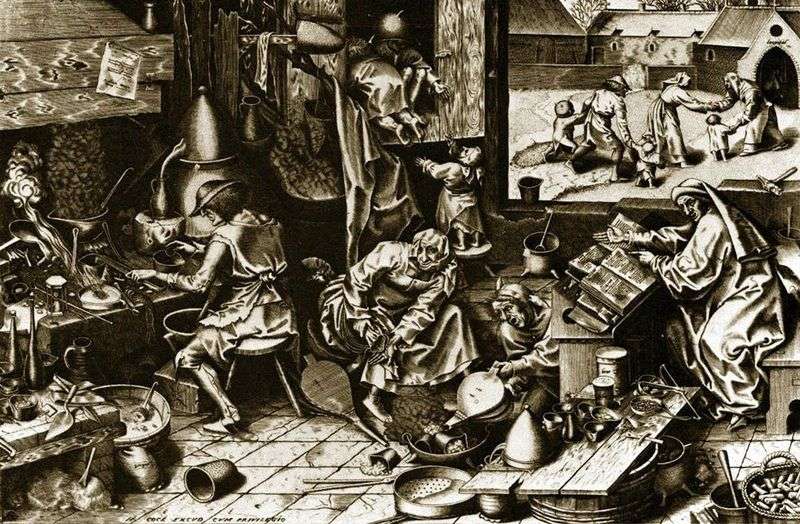 Alchemist. Engraving by Peter Brueghel
Alchemist. Engraving by Peter Brueghel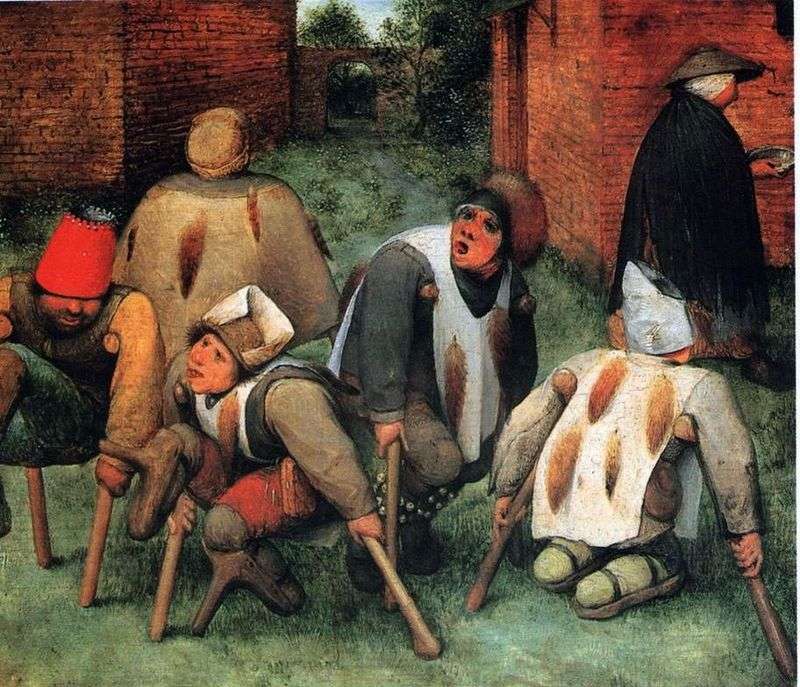 Cripples by Peter Brueghel
Cripples by Peter Brueghel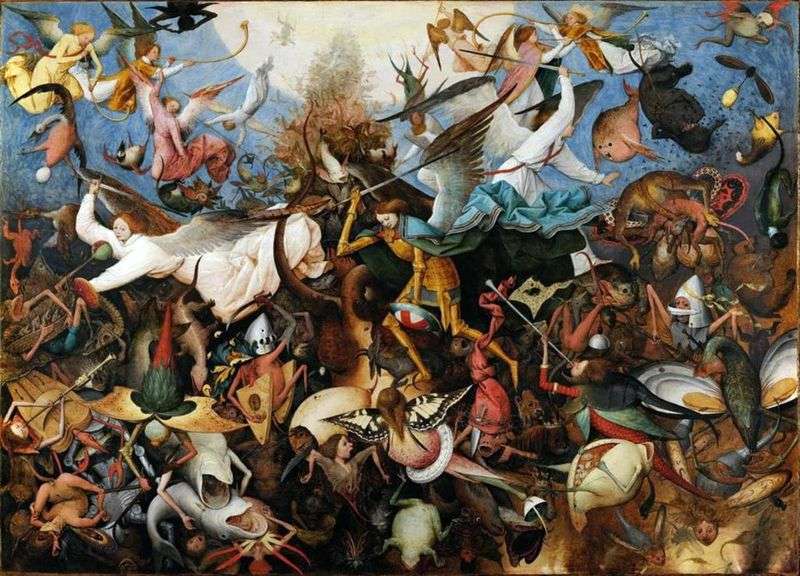 The Exile of the Fallen Angels by Peter Brueghel
The Exile of the Fallen Angels by Peter Brueghel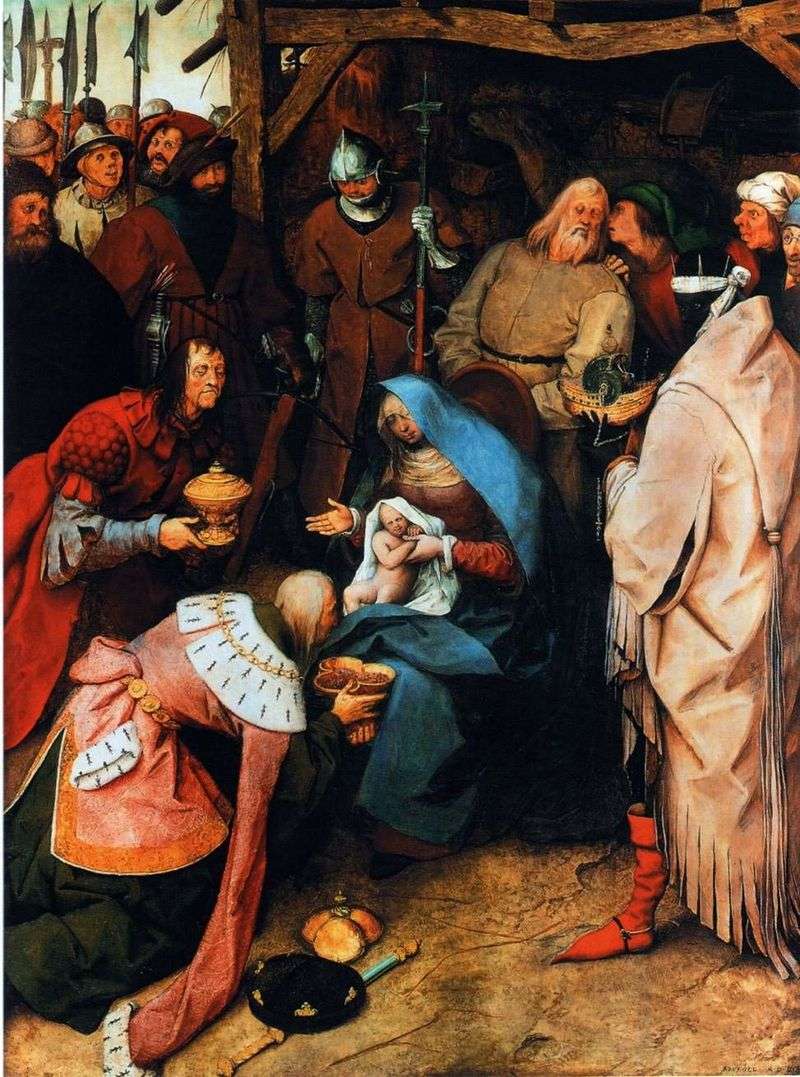 Adoration of the Magi by Peter Brueghel
Adoration of the Magi by Peter Brueghel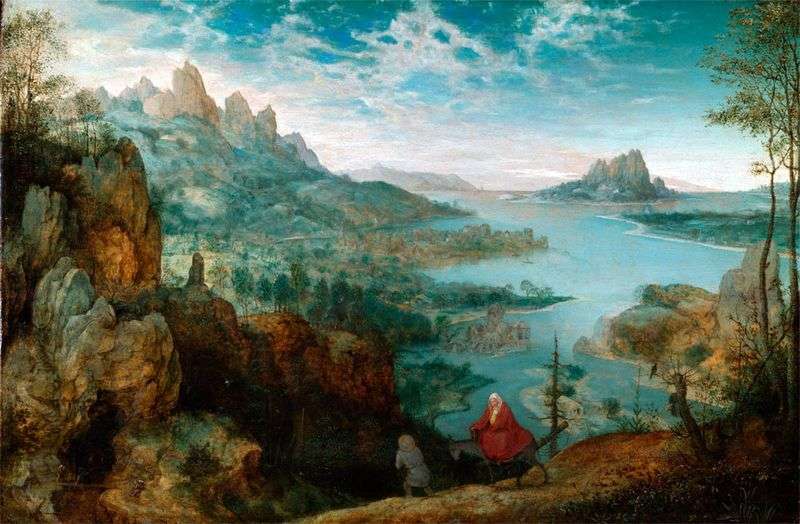 On the way to Egypt by Peter Brueghel
On the way to Egypt by Peter Brueghel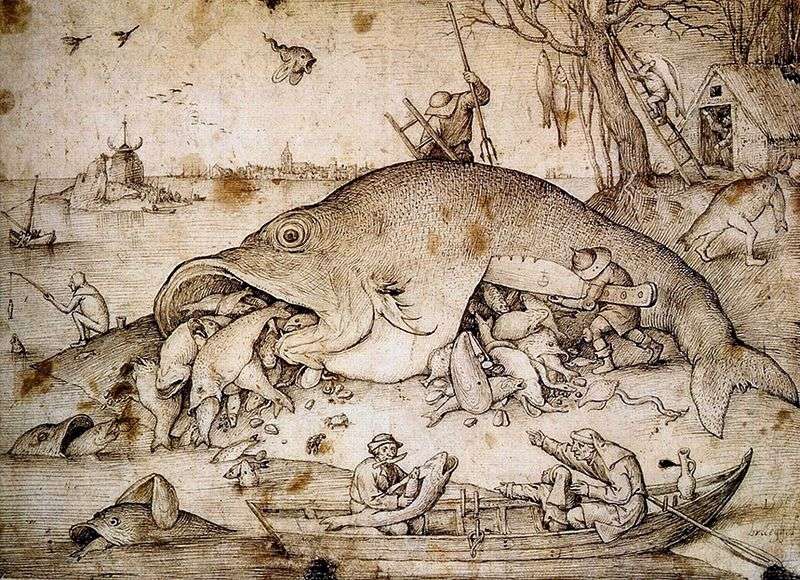 Big fish eat small by Peter Brueghel
Big fish eat small by Peter Brueghel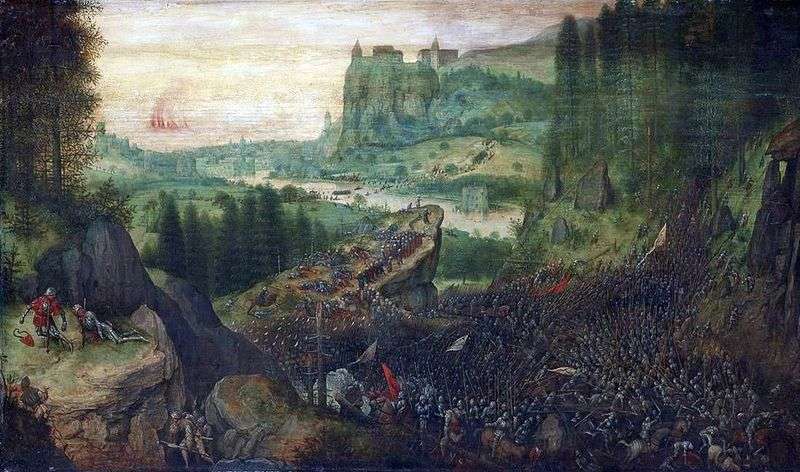 Suicide of Saul by Peter Brueghel
Suicide of Saul by Peter Brueghel